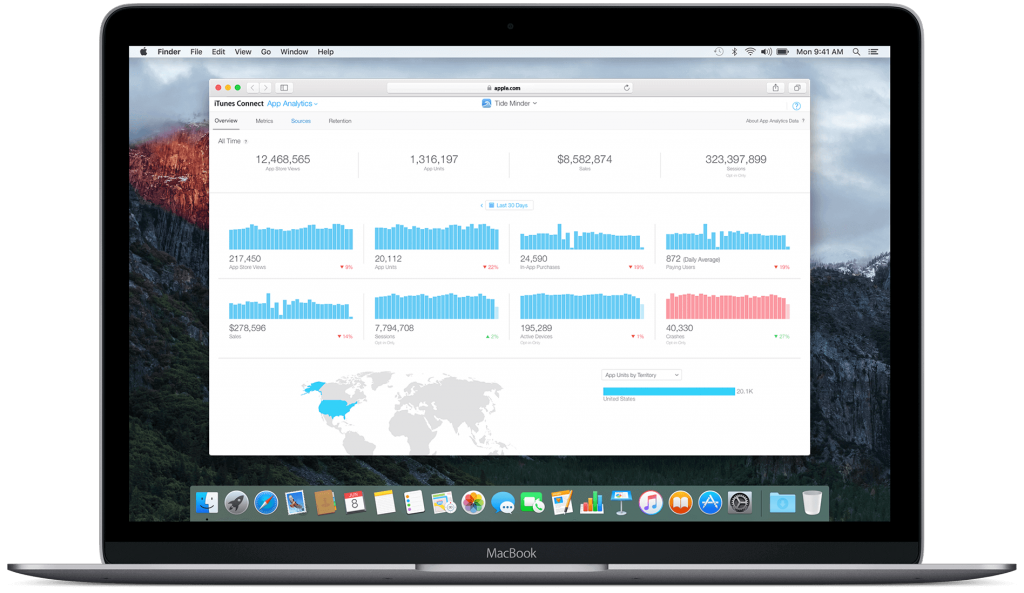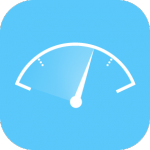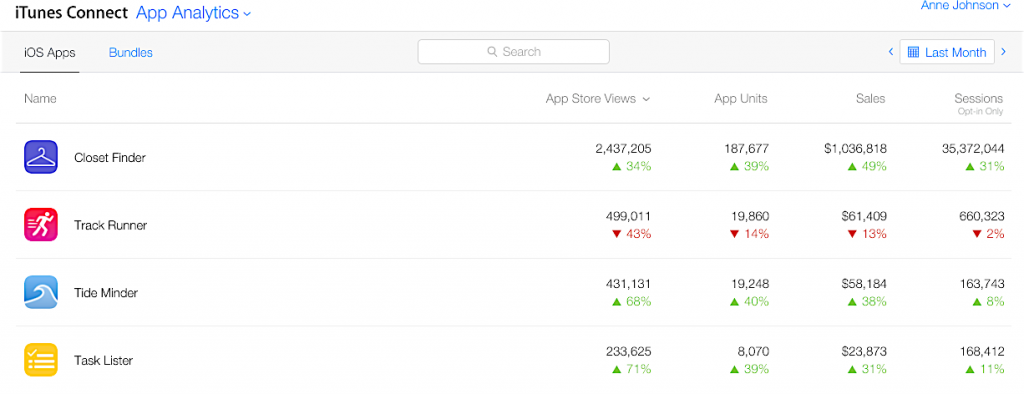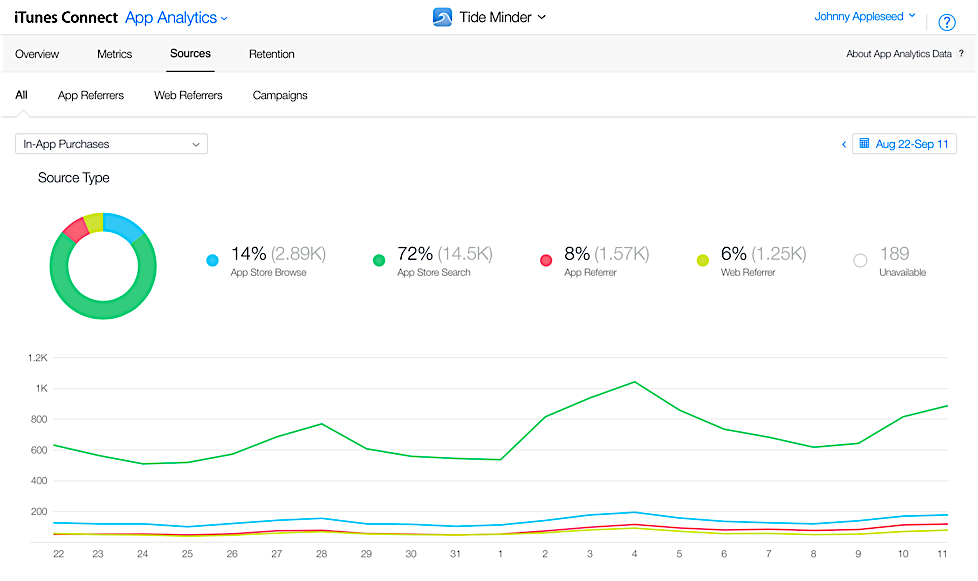App Analytics: Everything You Need to Know about Apple’s Latest Feature
 Liza Knotko
Liza Knotko  Liza Knotko
Liza Knotko Apple announced on its official developer blog that the company updated iTunes Connect with expanded App Analytics. All developer accounts were broadened with additional information on where an app was found by a user by adding App Store Sources and Referrers.
Renewed analytics provides insights on how customers discover apps. This statistics is divided into several categories including such sources as the Store itself including Search Ads taps, on the web, or within other apps. This innovation offers more scope for optimizing marketing campaigns and maximizing conversion.
Apple’s App Analytics debuted in May of 2015. IOS publishers got insights on app usage statistics, their faithful and helping friend in creating more effective ad campaigns. Updated mobile apps analytics is represented in the form of graphs, charts, and percentages over varying time periods just like other App Analytics data.

App Store developers get new metrics with no additional charge aside from regular membership fee which comprises of 99 USD in local currency where available. As for the Apple Developer Enterprise Program annual fee is 299 USD.
Apple Developer Program involves three team roles. These roles predetermine one’s level of admittance to membership perks. The Program provides the following team roles:
Note that the iTunes Connect users and roles are not the same entities as membership and roles of Apple Developer Program. The latter presupposes access to benefits related to app development and testing, iTunes Connect roles identify access to submitting and managing iOS apps. This differentiation is true even when both accounts are validated via the same Apple ID.
It’s also crucial to understand that in order see any statistics and insights one should have at least one approved version of an app, deleted apps are excluded from the dashboard.
To get access to App Analytics metrics within Apple Developer Program one has to take a few easy steps:


Apple’s App Analytics offers Weekly Email Summary service. This weekly report includes metrics on the performance of developer’s top 20 apps. One can subscribe to this feature in the Notifications section in Users and Roles. Tap on ‘Receive Weekly Summary’ from the dropdown and keep a finger on the pulse of your apps insight.
iTunes Connect Analytics still has considerable limitations despite this brand new statistics on app download sources. To begin with, the data is collected only from devices running iOS 8, tvOS 9 or later. Secondly, the metrics like Sessions, Active Devices, Retention and Installs are collected only for opted-in users which keep this App Analytics tool out of a significant portion of customers.
Moreover, Apple warns that reporting can be delayed up to 72 hours.
Above all, iTunes App Store still doesn’t provide built-in attribution mechanism, so when a user downloads an app, a publisher is trapped in intelligential black hole unable to track in-app events. This makes developers opt for other free or paid attribution methods and rely on them to get insight into apps performance after install.
Nevertheless, App Analytics benefits from being a first-party measurement solution, no other mobile iOS analytics tool can beat its reliability and confidence level.
Up to date Apple’s Analytics offered metrics on:
App Store Sources and Referrers complemented this list.
When it comes to new App Store Sources it’s important to keep in mind that iOS Analytics differentiates downloads resulted from App Store browsing and search. The latter includes direct Store search and Search Ads while browsing presupposes surfing through the Featured, Categories, or Top Charts sections. Even though Apple Search Ads taps didn’t get its separate analytics category this novelty will clarify marketing and metadata influence on downloads for sure.

One more Apple Analytics newcomer is App Referrers. Developers got a chance to track users who get to their app product page from a link within another app. These referrers insights can help publishers optimize their marketing budgets. Now it’s possible to center around only the apps which are highly effective in driving the most engaged and paid users.

Apple tries to address publishers’ complaints improving the App Store constantly.
For example, more interactive review system was scratched from developers wish list in March. With iOS 10.3 emergence users got a chance to rate apps without leaving them. Publishers on their turn were provided with an opportunity of public response. Now users get a notification about a response to their feedback and are given a chance to review the app once again.
Even though there is still room for extension and progress of Apple App Analytics, the latest update is highly beneficial for publishers there is no denying. It can help developers identify the most powerful and efficient user acquisition sources, figuring out which channels trigger the growth of impressions, product page views, and downloads.
The update also gives a better understanding of keyword changes effect on app search ranking in the Apple App Store. Publishers can find out whether it’s better to canalize their energies to be ranked higher in the charts or in the search.
Now there is no use in juggling with marketing activities blindly in hope of better conversion and monetization. All it takes is arm oneself with new metrics on Sources and Referrers, make the most of this intelligence, and take App Store by storm.